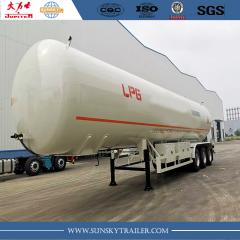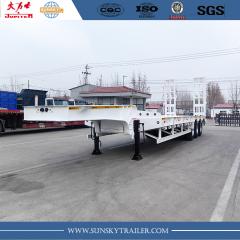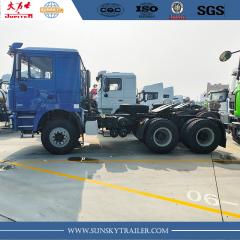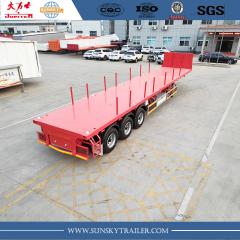-
 3 Axle Lpg Gas Tank Semi Trailer
3 Axle Lpg Gas Tank Semi Trailer
-
 Low Bed Trailer
Low Bed Trailer
-
 SHACMAN F3000 Tractor Truck
SHACMAN F3000 Tractor Truck
-
 Flatbed Pillar Trailer
Flatbed Pillar Trailer
SUNSKY VEHICLE, a manufacturer of flatbed semi-trailers, has found that the Flatbed Pillar Trailer i...
Bulk cement trailers are made up of a specific truck chassis, a bulk cement tanker, a piping system, and an automated unloading framework. Bulk cement trailer is appropriate for conveying dry bulk materials (with a particle diameter of less than 0.1mm), such as fly ash, cement, lime powder, mineral powder, and others. Cement plants, cement warehouses, and huge building sites all use these trucks extensively. Packing materials and labour costs can be greatly reduced because cement is transported unpackaged in big volumes.
The main purpose of bulk cement trailer
The cement trailer is used to transport dry powder in bulk. The dry powder does not need to be packaged in paper bags for bulk transportation of powder, from leaving the factory to transit on the road, storage, and use.
Special trucks, railroads, ships, containers, and other special vehicles will convey the dry powder. Many countries have embraced this means of transportation due to its outstanding social and economic repute.
Why the cement trailer has the V shape
Cement in the shape of a V or in the form of a kind the bottom of the trailers are empty. The flow is usually aided by air. Because the bottoms are sloped, the material will tend to flow down slope, making the last cement easier to remove. Steel and aluminum can be used to make it.
How does the bulk cement trailer work?
Cement Tankers work on the idea of using the trailer's own power to operate the air compressor, and then transporting the compressed air through the pipeline to the air chamber below the sealed tank to suspend the particles inside. The discharge valve can be opened when the pressure inside the tank reaches a specified level, allowing the material inside to be delivered through the pipeline.
Tips of driving the cement trailer safely
It won’t be wrong to compare bulk cement trailers like monter machines and they obviously demand highly skilled drivers to operate. Mention below are some of the safety tips that drivers can follow.
● Eliminate the chances of skidding
Over-accelerating, oversteering, and over-braking might cause your tank trailer to skid. Tanker trailer accidents are frequently caused by skidding. If the wheels begin to skid, quickly regain traction before the trailer jackknifes. It's difficult to control the bulk cement trailer after it jackknifes, and accidents are common. A skidding tank trailer is difficult to control on wet or slippery roads, so whether your trailer is full or empty, strive to drive steadily.
● Be careful with the break
You have to ensure the safety of your vehicle as well as other motorists if you allow yourself a long stopping space. It's also a fantastic technique to keep the inside of your cement trailer from sloshing. If the roads are wet or icy, increase the stopping distance.
● Plan way ahead
When driving a huge truck, such as a cement trailer, you must plan not only for stopping but also for the entire journey. Because the cement in your tank is difficult to entirely manage, it will slosh around as you drive. To avoid damage or accidents, as the driver, you must anticipate movement inside your bulk cement trailer and make precise adjustments.




